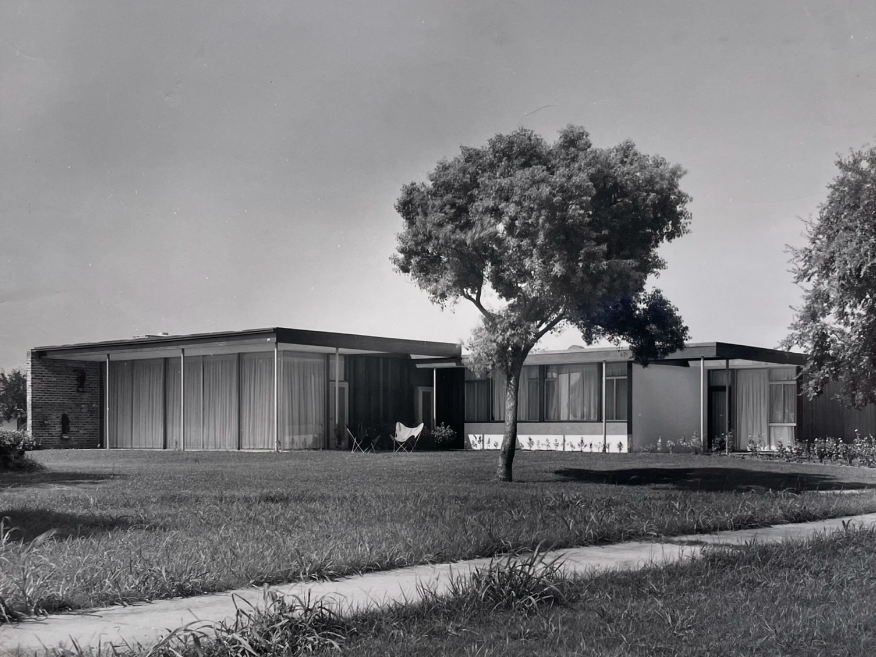Ask the Expert
In this Preservation in Print feature, we invite readers to send us your home-repair questions, and we’ll track down experts to answer them.
QUESTION
I’ve seen people board windows for hurricane season in different ways. What’s the best way to do it without causing damage to my window frames in the process?
— Anonymous
 THE EXPERT: Michelle Shoriak
THE EXPERT: Michelle Shoriak
PRC’s Director of Conservation & Education and Revival Grants Program Manager
Michelle’s Answer:
I’m glad you asked this important question. If you do not have operable shutters on your home, boarding your windows and doors is a good way to protect your house from hurricane damage. Here are some tips to make the process go smoothly and safely.
First, gather your materials. You will need:
- a tape measure
- ½-inch treated plywood
- exterior-rated screws about 2 inches in length
- drill with a bit that fits your chosen screws
- a putty knife
- wood filler
- 100- to 120-grit sandpaper
- latex primer
- latex finish paint
- a permanent marker
- a ladder (if needed).
- If you plan to cut your plywood yourself, you will also need sawhorses, a circular saw and safety glasses.
Step 1 | Measure your doors or windows to determine what size of treated plywood you will need. Most big box hardware stores will cut the plywood to size for you.
Step 2 | The bottom of the piece of plywood will rest on the windowsill (or threshold for a door or pass-through/full height window) while the top of the plywood should sit under the drip cap.
Step 3 | When measuring side to side, ensure that your plywood will overlap the trim by at least one inch.
Step 4 | Once your plywood is cut to size, it is time to screw it into place with your exterior-rated screws. Rest the plywood on the windowsill and place the first screw in the top center of the window trim (under the drip cap) and work your way around the trim, adding just a few screws on either side (for example: three along the top and two on either side). You do not need to add any screws to the bottom of the plywood; since the windowsill is sloped there may not be anything behind the plywood for the screw to grab on to.
Step 5 | Once the storm has passed, and you’ve removed the boards, don’t forget to fill the holes left from the screws. Unfilled nail or screw holes in window trim can lead to moisture intrusion, rot or failing paint; it is imperative that you fill these holes. Use a wood filler (see below for product suggestions). Always apply these products to the manufacturer’s specifications. When applying the product, fill the hole and leave the putty a little above of the surface. Once the product has set, sand the spot so that it is level with the wood trim surface. Using 100- or 120-grit sandpaper should be sufficient. Then prime and paint the area with latex paint.
Notes
- Wood Fillers: MH Ready Patch or Minwax Wood Filler can be found at most hardware stores, such as Ace, Home Depot, or Lowe’s; Crawford’s Putty can be found locally at Helm Paint; and Abatron Wood Epox can be found locally at Liberty Lumber.
- For openings larger than 4 feet by 8 feet, you will need two sheets of plywood. It is easiest to install the lower piece of plywood first, followed by the top piece. The two can meet in the middle with a seam; if they must overlap, make sure the top piece overlaps the bottom piece.
- If you intend to reuse your plywood year after year, remember to label its location on the house and store it flat in a dry place. Labeling the plywood helps you make fewer screw holes in the exterior trim with each use. Make the numbering system as simple as possible – mark the orientation (which way is up?) and the window number or location.
Hurricane Ready
As New Orleanians are all too aware, hurricane season kicks off June 1. While you may have weathered many storms in the past, it’s always a good idea to check — and recheck — your hurricane preparations. Here are a few more tips for preparing your house to weather a storm.
Vegetation
Now is the time – before a storm is in the Gulf of Mexico – to trim tree limbs near your home. This is helpful for hurricane preparation but also just general maintenance. Trees and plants touching the side or roof of a house can hasten damage.
Water drainage
Next time it rains, check how water flows around your property. Pooling water around your foundation or under your home can lead to the deterioration of the foundation as well as other issues, such as rising damp. While you are watching the rainfall, make sure to check that your gutters are flowing properly; if not, have them cleaned or secured at the correct slope to drain water into the downspouts. The downspouts should be pushing water away from your foundation.
Shutters
Check if your shutters are operable, including the hardware. Test opening and closing the shutters and locking the slide bolt and locking hardware. Hardware often gets painted and might need attention to become operable again. If you live in a historic district, be sure to check with the city’s Historic District Landmarks Commission before buying or making new shutters or adding new hardware.
Take pictures.
While checking on the status of your house, take pictures to have ready in case you need to make an insurance claim. Consider leaving a key with a neighbor if you plan to evacuate your residence. Family, friends or neighbors can get a jump start on cleaning up (think about the fridge!) before you are able to make it home.
You can find more resources about storm preparedness under the “Storm Prep” page of PRC’s Maintain Right series.
Also check out the HDLC’s Guidelines for Storm Preparedness & Resilience located in Chapter 13 of the HDLC Design Guidelines at nola.gov/next/hdlc/topics/design-guidelines.
Have other questions or suggestions? Email them to MShoriak@prcno.org.
Advertisements








